Nothing can jolt a hitter’s stat line into kinetic ecstasy quite like a grand slam. One swing, a 360-foot trot and suddenly your RBI column is richer by four. The pitcher on your side is relieved to have all those new runs to work with, while the guy on the mound is experiencing ruination. Today we’ll see some broad smiles in the clubhouse by the guys who wreaked havoc on the course of a game as well as the swings that jolted the scoreboard.
Growing up, I never heard the term that is used by broadcasters today to accentuate the grandeur of the achievement: Grand Salami. This conversion of the short, curt “slam” into a pile of delectable-sounding, heap-it-on! syllables owes its origin to the exuberant and equally knowledgeable Dave Niehaus. He came in as the voice of the Mariners at their inception in 1977, and — happily for me — stayed with the team until the conclusion of the 2010 season, after which he passed away.
I moved to the Puget Sound region in the summer of 2007, 3000 miles from my favored team, the Mets. It didn’t take long to become a Mariners rooter thanks to the two Daves in the booth, Niehaus and Sims, who is now the radio voice of the Yankees. Consummate pros both, with contrasting styles. Sims the guy who played the game hard as an amateur catcher and describes it with critical concision paired with Niehaus, whose calls surged with emotion and eloquence.
Take a look / listen to his most famous call, the purging of 18 years of Seattle Mariner nothingness:
So this was the voice that gave us the Grand Salami, maybe not golden-throated, but at least mustard-tongued. His death in 2010 cast a pall over the city.
Let’s downsize for a moment back to “grand slam.” Where did that elocution spring from? We know that the first instance of a four-run homer dates to 1881. I’ll spare you the details. But the term insinuated itself into the baseball lexicon at some unknown juncture.
Its first appearance might well have been from the tip of the pen of a bridge player. A grand slam in bridge occurs when a player wins all tricks in a hand. The application of the term to baseball is direct: One swing, four runs, table is set again.
Grand Slam has gone on to signify crowning achievements in other sports like golf and tennis, where winning the four major tournaments constitutes a Grand Slam, whether in a single calendar year or over a career.
Back to baseball and a historical total of grand slams too numerous for even A.I. to be bothered to tally up. But this much we do know: There had never been more than a hundred in any season prior to 1995. In just three years since (excluding 2020) have sluggers failed to combine for at least 100 grand slams.
Since we focus here on 20th century baseball, the achievement is magnified.
The 1964 World Series turned on Ken Boyer’s power exploits in Game 4. With the Yankees leading the Series, 2-1, and up on the Cardinals 3-0 in the top of the sixth in Game 4, the N.L. MVP from that season changed everything. His four RBIs would hold up, as Ron Taylor threw four innings of hitless relief to get the Redbirds back to square in the Series.
Moose Skowron finished off the Dodgers in Game 7 of the 1956 World Series when he deposited a grand slam in the lower deck in Ebbets Field, polishing off a rout by the Yankees. Teammate Yogi Berra had also hit one earlier in the Series. Skowron’s made for six in World Series history (there are now 23).
All but one of the first seven World Series grand slams came off the bat of a Yankee. The National League wouldn’t chalk up a W.S. grand slam until . . .
Far more dramatic than Skowron’s, Hiller’s drive broke a 2-2 tie in the seventh inning of Game 4 and allowed San Francisco to tie the Series up.
The ‘69 Mets had a problem. It was Houston. Where men were sent to the heavens and the Mets came crashing back to Earth (as the old Miracle Mets Fleetwood record indelibly put it). New York’s expansion mates had always been a touch better than the Mets, usually finishing 8th or 9th in the N.L. In 1969, they too boosted their record to .500 for the first time.
But to the Mets, they were the big brother they could never quite get the best of. In 1969 the Mets won 100 games. In 1969 the Mets went 2-10 against the Astros. The ignominy reached its most exaggerated point on July 30. In a doubleheader at Shea, the Astros had two double-digit run innings — and they were within four frames of each other. They pummeled New York 27-8 over the two games. After winning the third game of the series, their win total was one short of the Mets.
Naturally grand slams figured into the doubleheader annihilation. Two came in the same inning, as a matter of fact.
Ernie Banks set the record for grand slams in a season with five in 1955, a number which has now been upped to six by Travis Hafner and Don Mattingly. Here he crosses the plate with his fourth of that season.
Gil Hodges gets four bags worth of smiles from his mates as he returns to the dugout in 1951 after taking over the early-season major-league home run lead.
The Tigers win the pennant in the last inning of the last game of the 1945 season on a come-from-behind slam by Hank Greenberg.
Jimmie Foxx steps on the plate in 1938 as attention is divided on the diamond between his grand slam and the Yankees, including Bill Dickey, Lou Gehrig and Casey Stengel, hogging the spotlight with their contention that it was a foul ball.
Jim Northrup hit two grand slams in the same game for Detroit in 1968, a feat that would be all but erased from the memory of Tigers fans when he connected in the World Series that year for yet another one in Game 6 that guaranteed the Series would go to a Game 7.
When your first grand slam is also an inside-the-park job, chances are good you’re not a pitcher. Remote possibility, but not an impossiblity.



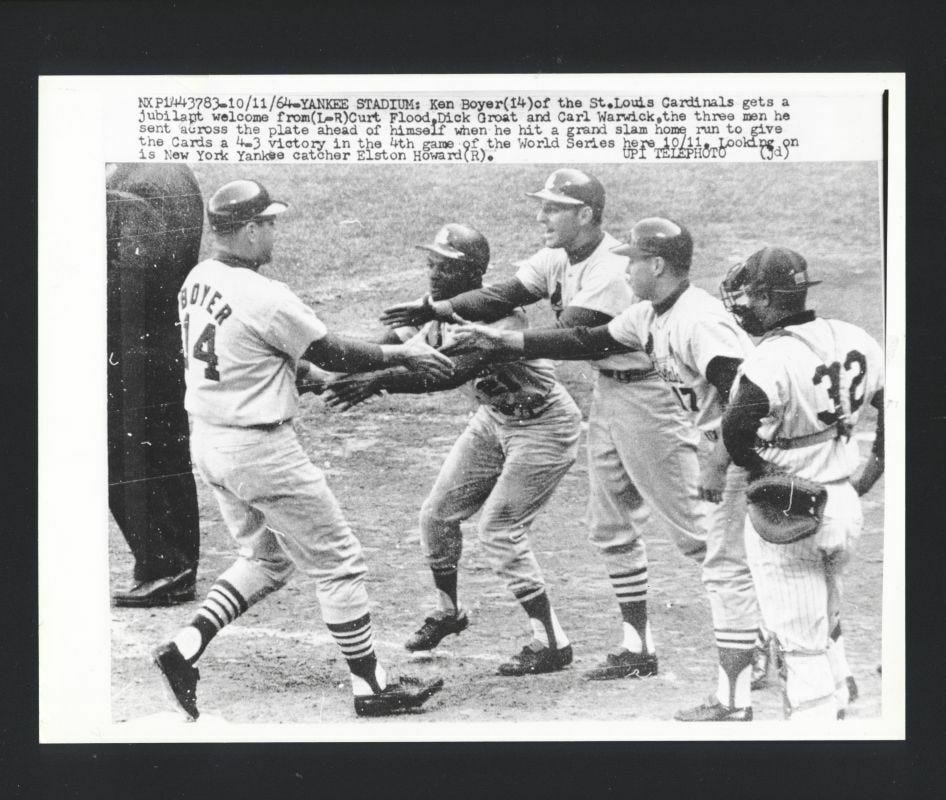



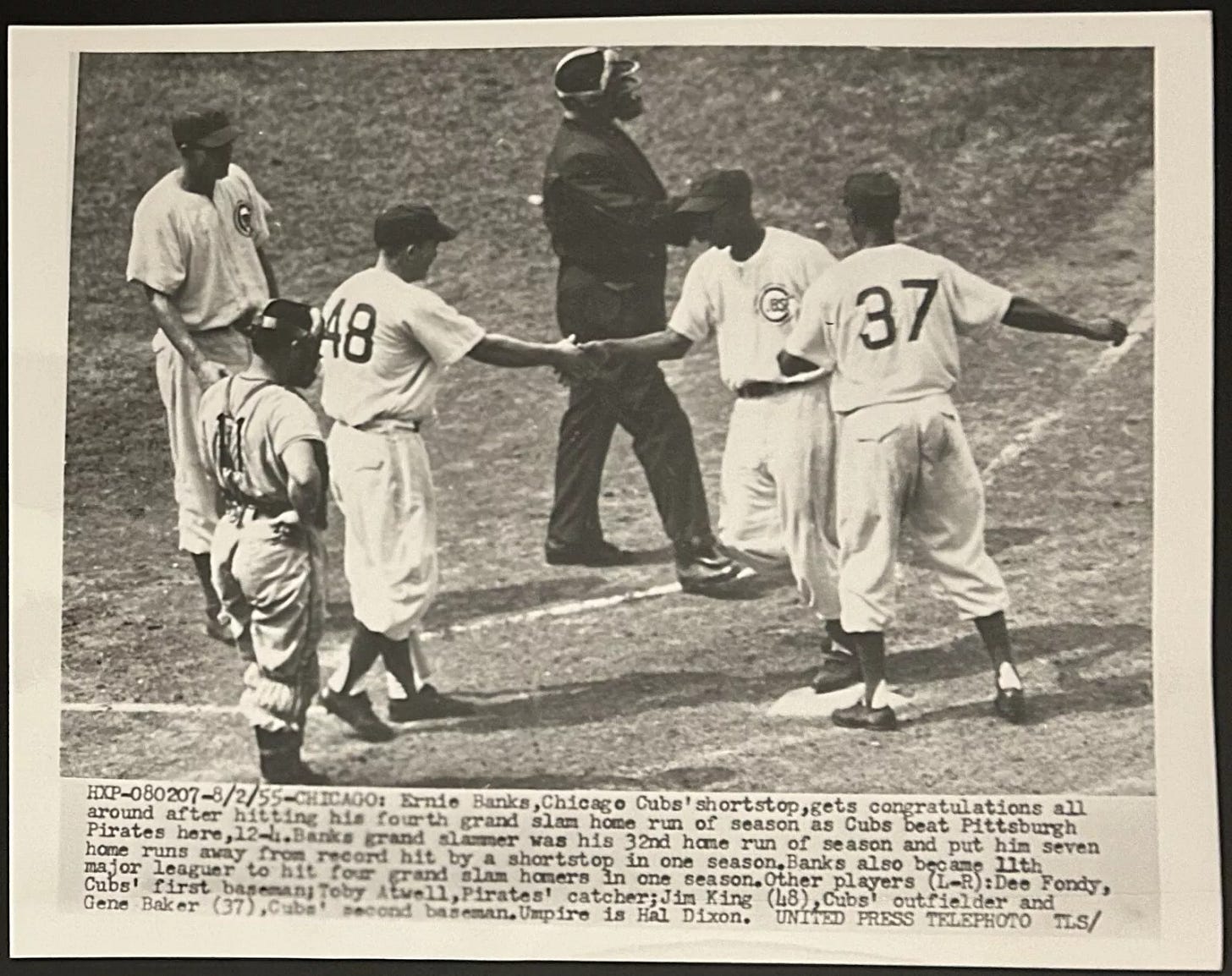




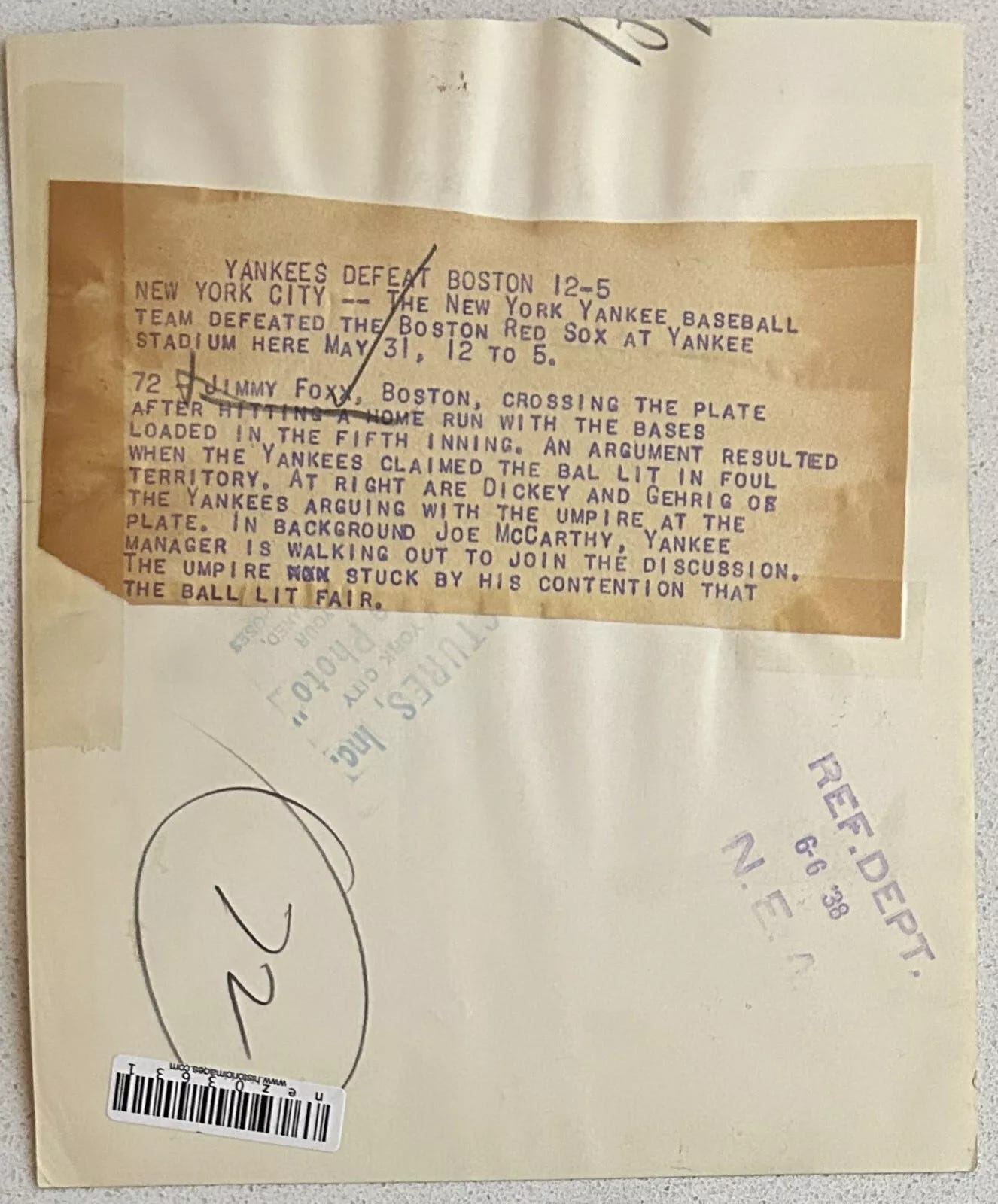
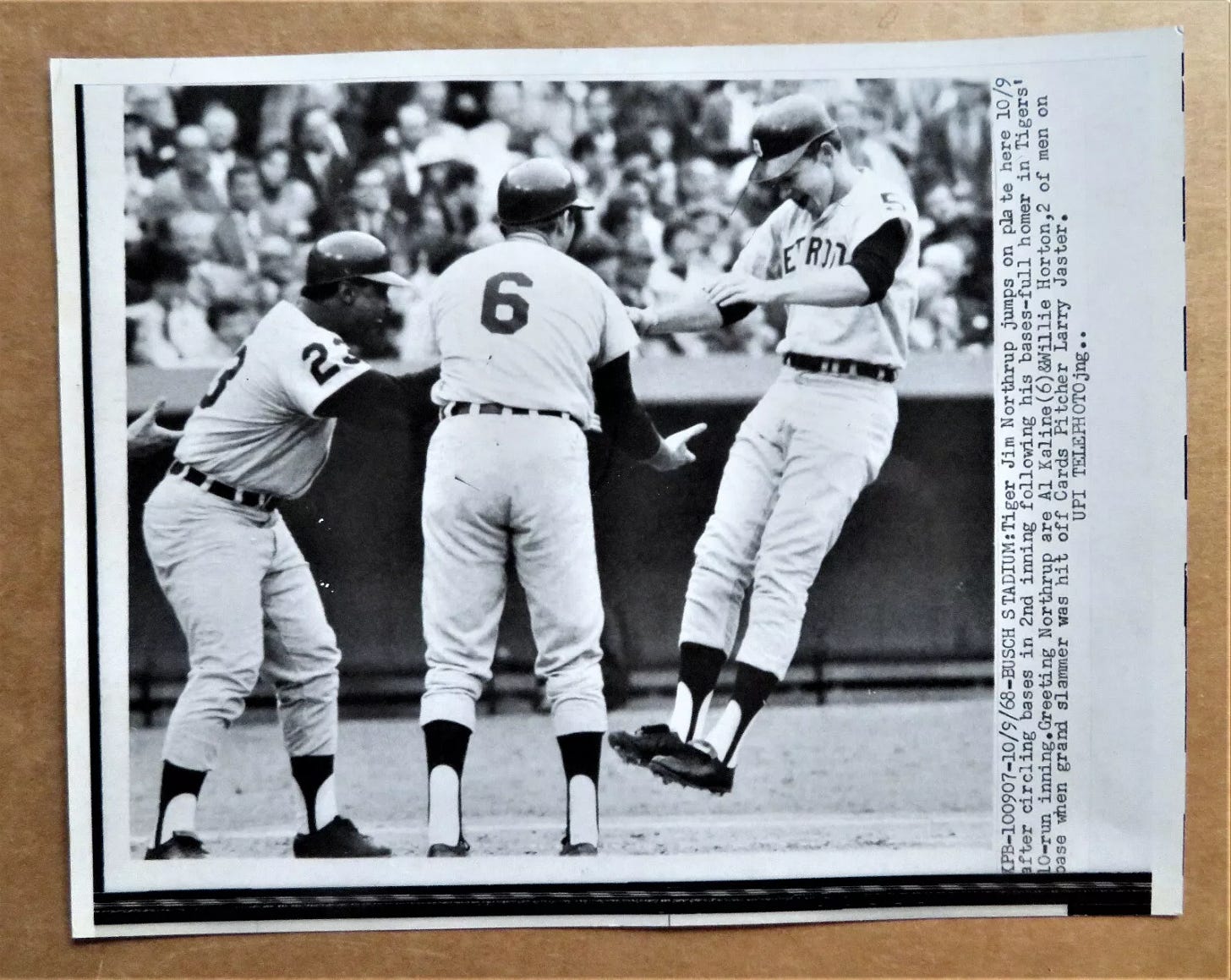
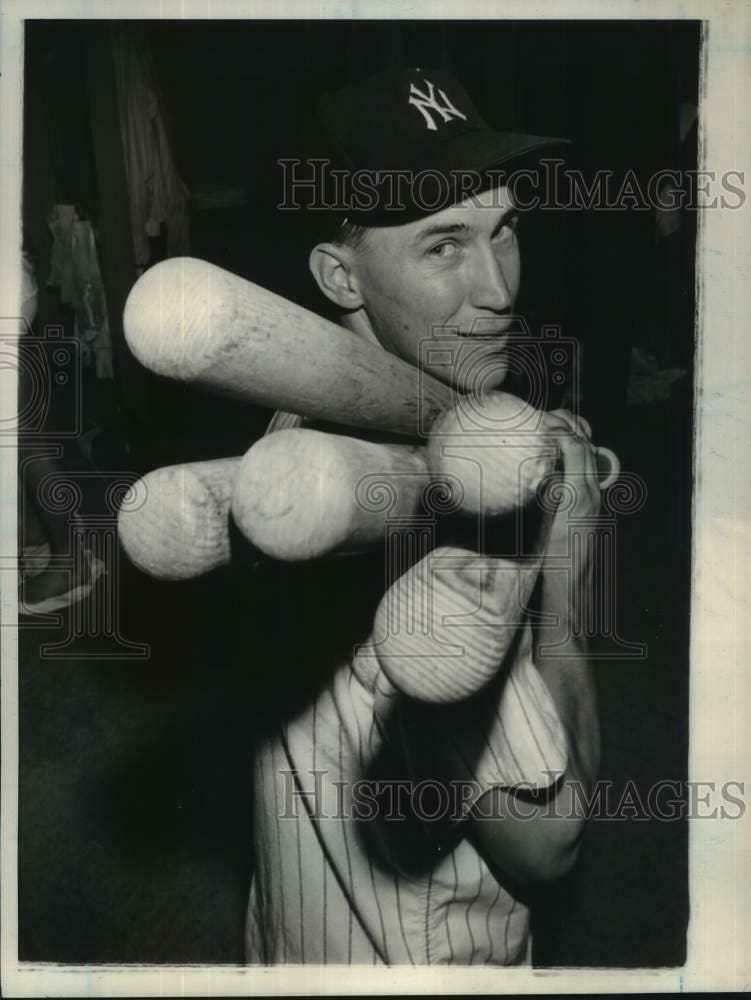
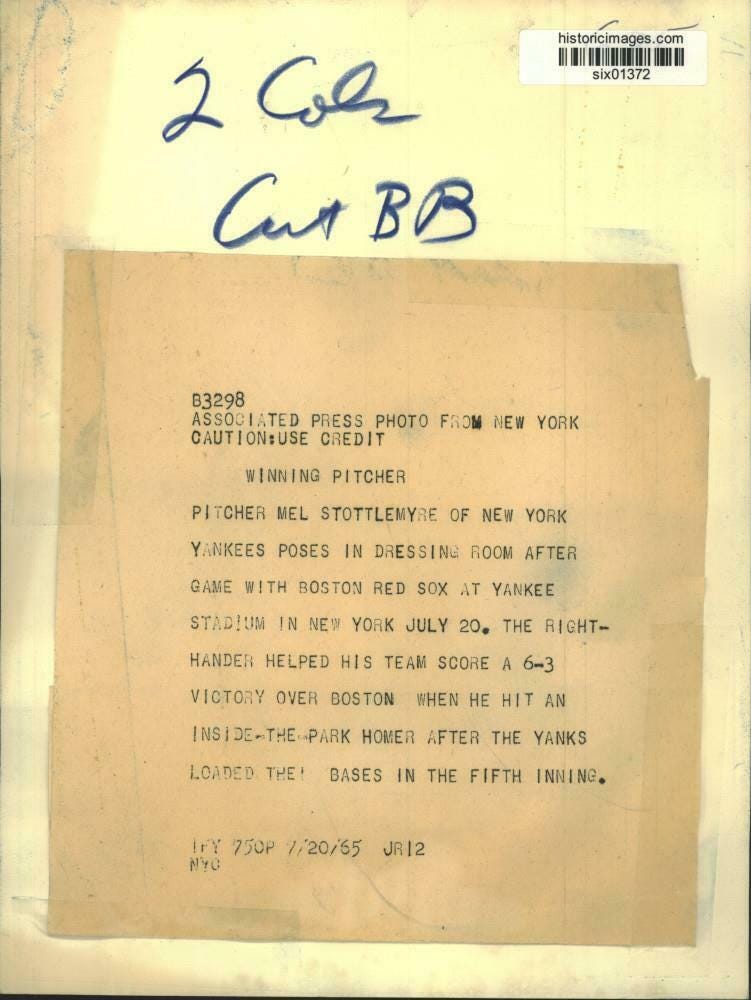
Love the Moose shot photo from 1956, especially how it shows the angle in those left/center stands. A grand slam always features the most possible players on the field. With Berra and Mantle on base, do you think your collection has another ‘in action’ photo with more Hall of Famers?